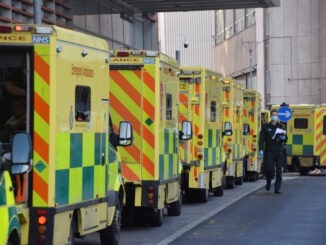
As reported by the BBC, the pressure on emergency care is greater than ever in England, latest figures show, amid fears of a spike in demand after the ambulance strike
A quarter of ambulances, more than 16,000, were delayed for more than an hour outside A&Es – even before Wednesday’s action by ambulance crews.
NHS bosses are warning of many more new patients ahead of Christmas.
And there is particular concern over those who did not seek medical help during the industrial action.
Hospitals were quieter than normal during Wednesday’s ambulance strikes, but NHS bosses have said they are worried about a rebound effect, created by people turning up in large numbers after avoiding seeking help on strike days.
The Department for Health and Social Care said its number one priority this winter “was to keep patients safe and ensure they can access care when and where they need it”.
Thousands of paramedics, call handlers and technicians took action in England and Wales on Wednesday and are set to strike again on 28 December.
Data from NHS England for the week to Sunday 18 December shows that delays getting ambulance patients into hospital for treatment are higher this month than during any previous winters.
The target for handing over patients from an ambulance to hospital staff in England is 15 minutes.
But four in 10 ambulances arriving at A&E waited at least 30 minutes before unloading patients – up from three in 10 the previous week.
And a quarter waited more than an hour (up from 17%), which contributed to 46,000 hours of ambulance staff time being lost to delays handing over patients.
The figures may explain why eight out of England’s 10 ambulance services declared a critical incident on Tuesday – the evening before the ambulance strike began – because of extreme pressure.
Some are now reducing their alert level, but say they are still under immense pressure.
Thousands of hospital beds are also occupied by patients ready to be discharged, and these numbers are going up sharply every week.


Be the first to comment